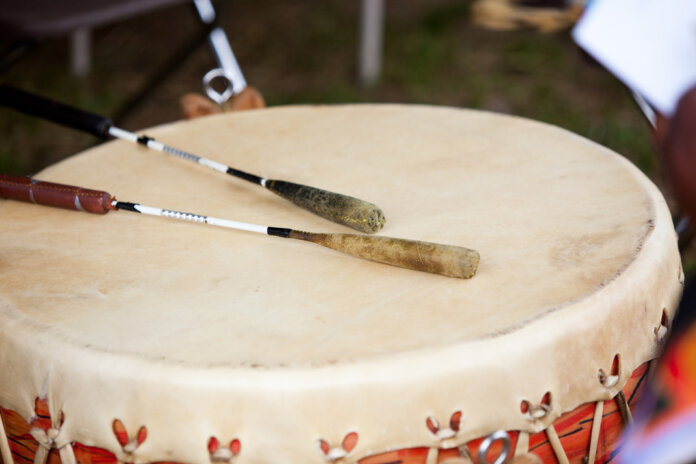As Nova Scotians prepare to observe the National Day of Truth and Reconciliation, it’s important to honor the traditions and cultural practices of Indigenous communities. Among the most powerful symbols of Mi’kmaq heritage is the drum – a simple instrument whose resonance carries centuries of meaning.
Mi’kmaq drums are traditionally handcrafted using materials sourced from the land. The frame is typically made from bentwood, often spruce or ash, carefully steamed and shaped into a circular hoop. The drumhead is stretched from animal hide, such as moose or deer, which is dried and tanned before being secured over the frame.
The process is meticulous, requiring patience, precision, and respect for the materials. The resulting drum is both durable and resonant, capable of producing a deep, steady rhythm that forms the backbone of Mi’kmaq music.
Each drum is unique, and its creation often carries spiritual significance.
Some drummers and makers imbue their instruments with prayers or blessings, recognizing the drum as a living object that holds the heartbeat of the community.
Traditionally, the Mi’kmaq drum is more than a musical instrument – it is a vessel of communication and a tool of ceremony. Drums are central to gatherings, including powwows, feasts, and other cultural celebrations, where the rhythm guides dances, songs, and storytelling.
The drumbeat is considered a reflection of the heartbeat of Mother Earth, linking participants to the natural world and to one another. In ceremonial contexts, the drum can help mark spiritual journeys, signal prayers, or honor ancestors. Its steady pulse fosters a sense of unity, grounding individuals in shared tradition and community identity.
In Eastern Nova Scotia and Western Cape Breton, drumming has long been a vital part of Mi’kmaq expression. Beyond music, it symbolizes resilience, continuity, and the preservation of culture.
The drum connects generations, carrying forward stories, teachings, and values that have endured despite historical hardships.
For the Mi’kmaq, each drumbeat is a reminder of identity and belonging – a living link between past, present, and future. As communities gather on Reconciliation Day, the sound of the drum resonates not only as music but as a testament to the strength and vitality of Mi’kmaq culture.


